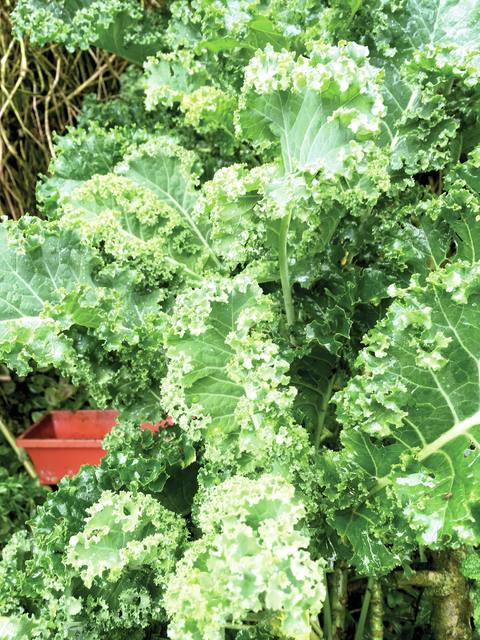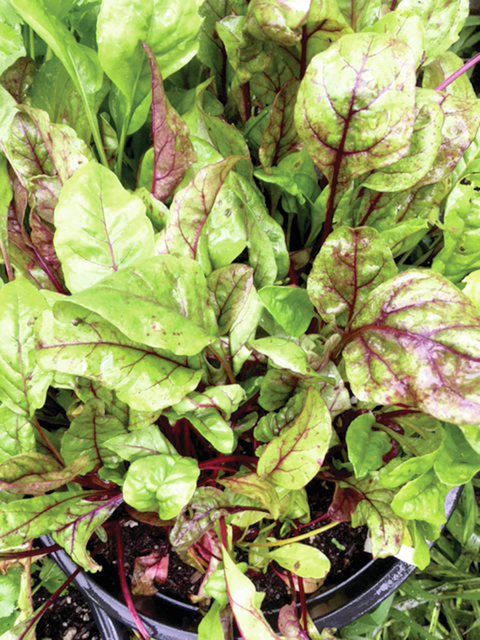At this time of year, many fruits and vegetables are coming to the markets. Bon Appetit magazine has some great guides to choosing them.
Cherries
Bing cherries are beginning to appear at supermarkets, but it’s just the start of the season and prices are high right now.
Bing cherries are one of the healthiest of all cherries, according to Bon Appetit, with anthocyanins, which might help fight inflammation. Choose cherries that have taut and shiny skins. The stems should be bright green, flexible and not look dried out.
Carrots
Baby carrots are convenient for crudités but they do not exist as a variety. Instead, these baby carrots are regular carrots that are whittled away until the outer layers, or the nutritious parts, are removed. The best carrots are full-sized carrots with their tops still attached or right from your garden.
Cooked carrots have three times more beta-carotene than raw ones. So, forget the baby carrots, get the whole carrots and slice and cook them.
Kale
Unlike carrots that are more nutritious when cooked, kale has more Vitamin C, antioxidants and phytonutrients when eaten raw. The red Russian variety of kale, with its red leaves, has more antioxidants than the green variety.
Lettuce
The most nutritious lettuces are the red, purple and brown varieties. The darker hues mean they are rich in anthocyanins.
In addition, a loose arrangement of leaves that gets direct sunlight prompts leaves to produce a botanical sunscreen, which boosts their nutrient content. Great salad greens include arugula, radicchio, endive and mature spinach.
Tomatoes
Generally, the smaller and darker the tomato, the more cancer-fighting lycopene it contains. These small tomatoes have 18 times more lycopene than a beefsteak tomato.
Asparagus
It takes three years to produce the first spears after planting, but once the season starts they need to be picked every 24 hours because they shoot up so quickly. After purchase, store them standing up in a pitcher or canister of water in the refrigerator. Do not buy asparagus if the ends looks dried up or shriveled.
Watermelon
The only way you can tell if a watermelon has vibrant red flesh and is sweet, being packed with lycopene, is to buy it already halved at the market. But if you buy a whole one, leave it on your counter for a few days. It is one of the rare foods that becomes healthier as it sits.
Beets
Dark red beets with their greens attached are a great source of cancer-fighting compounds known as betalains, and the greens just simply sautéed are more nutritious than the beets themselves.
Peaches
Now to totally confuse you, the darker colored peaches do not mean they are more nutritious. The white-fleshed peaches have up to six times more antioxidants than the yellow-fleshed varieties.
Cauliflower
One cup of cauliflower is only 29 calories and makes a great substitute for mashed potatoes. However, the orange-hued cauliflower contains about 25 times more Vitamin A than the white variety.
Broccoli
A cup of steamed broccoli contains 123 milligrams of Vitamin C, 505 milligrams of potassium, 94 micrograms of folate and 114 micrograms of Vitamin A, and is only 44 calories.
Kiwifruit
Native to China and called Chinese gooseberry, these fruits taste like a cross between strawberries and pineapples. One kiwifruit contains double the Vitamin C of an orange and as much potassium as one banana.
Make sure the fruit is not wrinkled or bruised and gives slightly when touched. Ripe kiwifruit can be stored in the refrigerator for up to two weeks. If you purchase green kiwi, place it in a paper bag with an apple or banana, which will release ethylene gas that speeds up the ripening process. Check often as once ripe, it will start turning mushy. The skin is edible but most people like to eat kiwi peeled. As soon as it begins to be peeled it will start to turn soggy, so it should be eaten immediately after.
Cucumbers
Basic varieties include:
• Kirby cucumbers, which can be eaten raw or pickled. They are usually short with tasty firm flesh and thin skin.
• Persian, or mini seedless, cucumbers have the highest ratio of skin to flesh. Its flavors are concentrated, and Persian cucumbers are crunchy.
• Common, or American slicing cucumber, which often are waxed with thick skin and big seeds, meaning peeling and seeding are a must.
• English, or hothouse, cucumbers have thin, crisp skins and a delicate aroma. They are great for juicing and making cocktails; the skin also adds color and flavor to flavored water.
Tomatillos
Related to cape gooseberries, tomatillos have a citrusy flavor and make great salsa. One medium tomatillo contains 11 calories and a good amount of potassium, vitamins C, K and A. They also contain calcium and folic acid.
Conclusion
Eating fruits and vegetables rich in Vitamin C helps people with iron deficiencies raise their iron intake. Vitamin C helps the body absorb iron, especially in spinach and broccoli.
Email me at audreywilson
808@ gmail.com.









